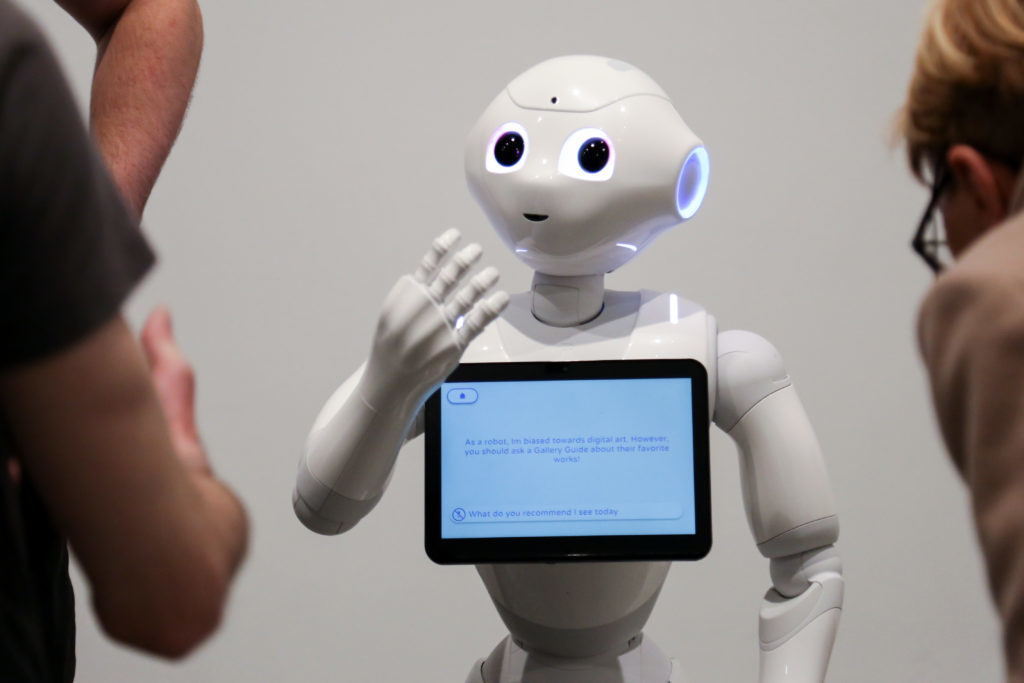A four-foot tall robot can now be your tour guide at some Smithsonian museums.
Pepper is a robot museum guide that had its first introductory demonstration at the Hirshhorn Museum and Sculpture Garden Monday. “Meet Pepper” events will continue throughout the month, and the museum will continue rolling out 25 models at five Smithsonian institutions, like the Smithsonian Castle and the Smithsonian National Museum of African American History and Culture.
The four-foot tall robot has a white plastic sheen with an iPad attached to the front of its sleek human-like frame.
All communication with the robot is done by touching the tablet or talking. Its arms can move to the beat of two dance numbers, and they also spread out when told to pose for a selfie – just some of Pepper’s pre-programmed actions.
Ashley Meadows, gallery guide coordinator for the Hirshhorn, said she wanted Pepper to function as a “fun, approachable art museum insider” who can answer the questions that visitors may be too shy to ask human museum guides.
The robot was crafted by Softbank Robotics. Meadows said Pepper robots have been used in airports and commercial spaces, but this is the robot’s first venture into a “cultural” space like the museums.
Pepper has big “puppy dog” eyes and a chirping, childlike voice. Meadows said these design choices were made so users would be comfortable approaching the robot and wouldn’t get too frustrated if the robot messed up.
Meadows said the robot is programmed with answers to questions about specific pieces as well as more general questions about touring the museum, like how to “slow view,” a way of art viewing that facilitates more appreciation of the work.
After originally giving Pepper answers to questions about museum hours and bathroom locations, Meadows became more interested in tackling challenges of “museum literacy” and using the robot to explain exhibitions.
“Sometimes it can be intimidating to start a conversation with a stranger or walk up to somebody and say, ‘Hey I don’t really understand this, can you talk to me about it?’” Meadows said. “I’m really using it as an icebreaker.”
On the third floor of the Hirshhorn, Pepper was stationed next to the “Big Man” sculpture on display, where the robot was conditioned to recite a brief analysis of the piece. Meadows said there are plans to move Pepper around the museum to tell visitors about different exhibitions and experiment with more of Pepper’s capabilities in the next few months.
After about an hour at the demo, Pepper’s eyes were fluttering and its head was slightly sulking. The robot needed to be reset, but after a quick reboot from a human handler – it was back to its bubbly self.
“Pepper really still has quite a number of limitations and we have such high expectations of what robots are and what robots do,” Meadows said.
Shivaani Gardner contributed reporting.




